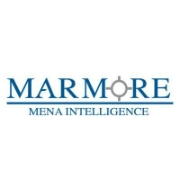With the hosting of FIFA World Cup 2022, Qatar had made its mark as the first country in Middle East to host the event. However, the amount spent by Qatar on the event has raised eyebrows. Qatar has reportedly spent USD 220bn on hosting the World Cup. This has been touted to be much higher than the amount spent by previous host countries. For example, the costliest tournament until 2022 had reportedly been Brazil’s 2014 World Cup, the expenditure for which had been at USD 15bn (Quartz).
However, on taking a closer look, most of Qatar’s expenses have been towards building the infrastructure such as developing a new city, building new hotels, developing a metro rail system, expansion of airport, roads etc. While some of them (like building hotels) can be directly attributed to the World Cup, others like metro or airport are part of the broader infrastructure development in line with the long-term vision and need not be directly attributed to the World cup. Since the announcement of the World Cup, Qatar’s total capital expenditure has been at USD 243bn(IMF). Of this, total direct expenses to build eight stadiums have been reported to be between USD 6.5bn and USD 10bn which is in line with the spending by countries that hosted previous FIFA World Cup tournaments.
Qatar's Capital Expenditure in USD bn (2011-2022)
Source: IMF
The infrastructure such as metro rail system has reportedly been part of the Qatar National Vision 2030 and the timeline set in the light of the World Cup seems to have ensured their speedy implementation. Expenditure on expansion of airports, overhaul of sewage systems, development of drainage, building of new hotels are likely to have been warranted to handle the influx of about 1.4mn visitors (Qatar 2022).
While development of infrastructure is seen as a move towards economic development and attracting foreign capital, there are mixed views on the economic benefit that Qatar would reap from its expenditure. Foreign Direct Investment and Tourism are some avenues that are expected to benefit from hosting the World Cup. Qatar’s Ministry of Commerce has identified 83 areas of commercial investment opportunities for private sector and Qatar Chamber expects the country to receive 6.24 mn tourists by 2028 (MiddleEastEye). However, in the past, overall FDI in Russia, Brazil and South Africa had declined in the years after the tournament in all three countries (Investment Monitor). In all, while direct spend towards hosting the World Cup has been much less than the USD 220bn, Qatar has spent a significant sum towards infrastructure development in the run up to the tournament. While hosting the World Cup has definitely helped Qatar gain global attention, the economic gains from its expenditure can accrue for many decades to come.
Read our earlier article about FIFA World cup - FIFA World Cup – The much-awaited event in GCC for 2022
Stay Tuned To Marmore MENA Insights!
Never miss a patch or an update with Marmore's Newsletter. Subscribe now!
Related Article
2024 Kuwait Banking: Interest Rates and NIM Trend Analysis
The blog discusses how net interest margin of Kuwaits banks has moved across interest rate cycles, in light of awaited policy rate cuts.
Read MoreAre ESG and Sustainable investing the same?
ESG and Sustainable Investing might seem to be related but both are distinct concepts. The GCC nations transition towards cleaner energy portrays a buoyant outlook for ESG and sustainable investing.
Read MoreBusiness Impact of IFRS Sustainability Standards for GCC
The impact of the recently issued IFRS sustainability standards, once adopted, is likely to be high, as GCC companies scramble to allocate adequate resources for the adoption.
Read MoreTags
No Tags!





